Halong Bay, located in the Gulf of Tonkin in northern Vietnam, stands as one of the world’s natural wonders and a UNESCO World Heritage site. Known for its emerald waters and thousands of towering limestone islands adorned with lush rainforests, the bay is not just a natural beauty but also of significant cultural importance. Nestled among these serene waters and limestone formations are the floating villages of Halong Bay, communities that have thrived for generations. These villages, made up of anchored wooden houses, are the homes of fishermen and their families who have adapted to a life almost entirely on the water. Let’s explore the beautiful floating villages in Halong Bay that you must visit in the following article!
A Brief Overview of HaLong Bay’s Floating Settlements
In the past, numerous floating villages dotted both Halong Bay and Lan Ha Bay. Life in these settlements was challenging, particularly for children pursuing education. To assist these families, the Vietnamese government provided job opportunities and housing to encourage relocation to the mainland. Today, only a handful of families remain in these fishing communities, preserving ancestral professions and adding a distinct touch to Halong Bay’s tourism.
When you visit Halong Bay, you can experience these unique floating villages. Each has its own charm, yet they all play a vital role in enhancing the allure of Halong Bay and are a significant component of Vietnam’s system of floating communities.
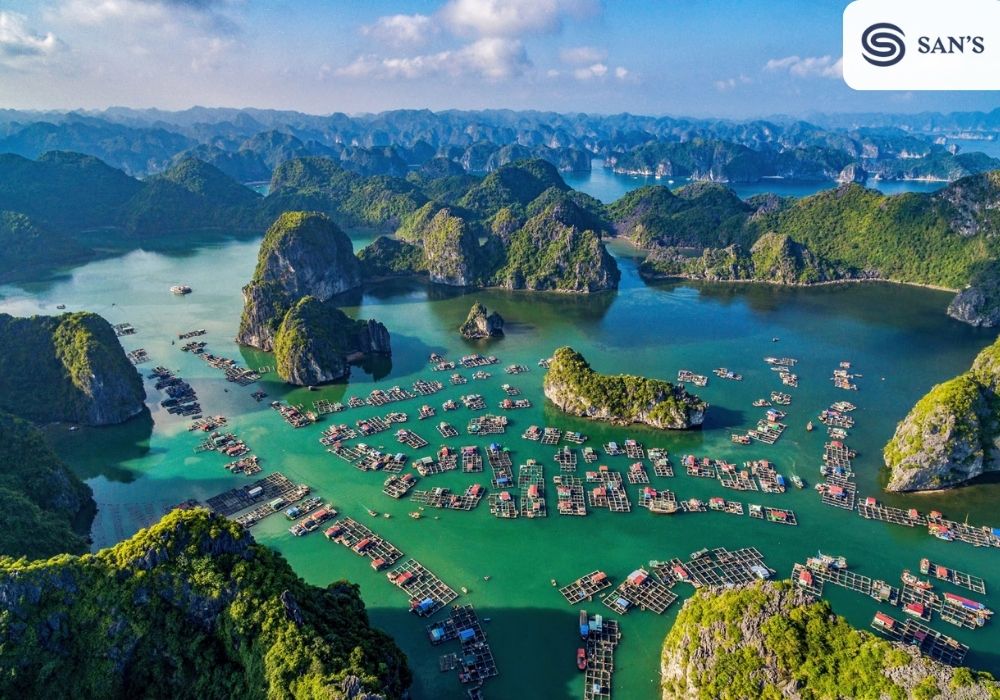
Top 4 floating villages in Halong Bay you must definitely visit
Currently, Halong Bay is home to four primary villages, and here’s their tale:
In the early 19th century, two fishing communities emerged, named Giang Vong and Truc Vong.
- Their initial roots weren’t at sea:
These people, originally from the land, shifted their living spaces to boats but continued to honor their ancestral gods at shrines on the mainland. For community discussions or political matters, they would simply anchor their boats and convene.
From 1946 to 1954, amidst the conflict with the French, these communities dispersed across the bay. It was only after the region gained stability that they returned to establish their new floating homes.
- The present scenario:
Today, the direct descendants of these early settlers predominantly occupy the four existing villages: Vung Vieng, Cong Dam, Cua Van and Ba Hang.
Vung Vieng Floating village
- Situated at the heart of Bai Tu Long Bay, approximately 24km from the mainland.
- Originated in the 19th century when age-old fishermen began anchoring their vessels and trading provisions here.
- The village features a notable landmark, Cao Cave, which is regarded as the symbolic entrance of the village.
- Current Status: Open to tourists.
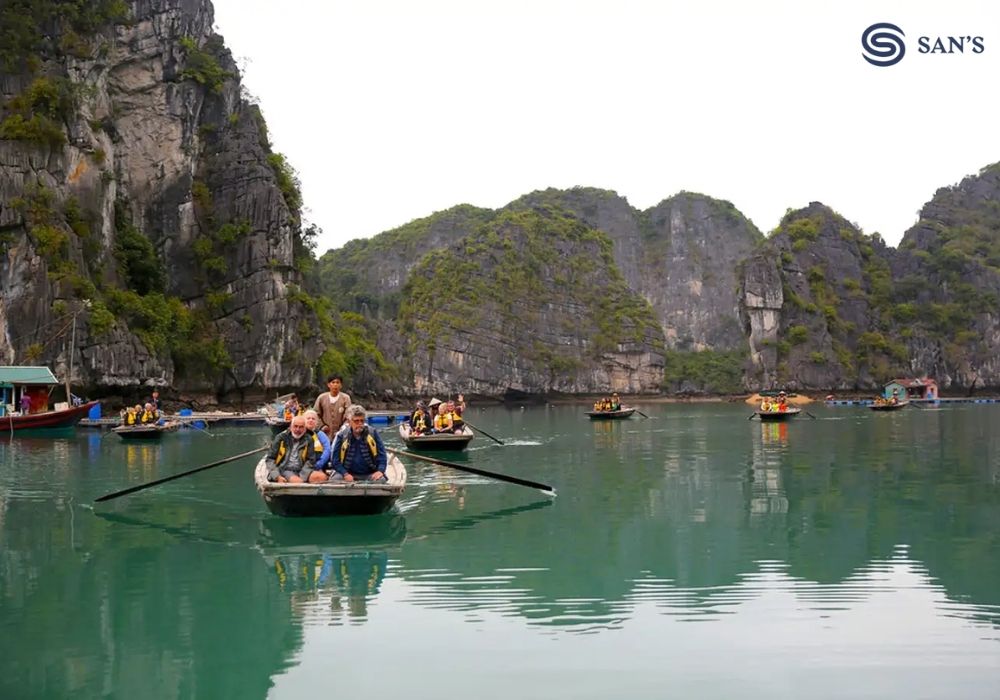
Vung Vieng fishing village is home to long-standing residents with only a handful of households residing on boats or floating platforms. Despite its modest population, the community boasts a distinctive way of life, offering visitors a plethora of unique experiences.
In 2012, the Ha Long Bay authorities issued a directive for the relocation of floating village inhabitants to the mainland. Today, many locals primarily cater to tourists. Vung Vieng draws countless visitors due to its authentic charm, reminiscent of a classic fishing village. Guests have the opportunity to engage with local fishermen, trying their hand at fishing, and can also explore the untouched beauty of the area via local rowboats or kayaking, indulging in the tranquil surroundings.
For those wishing to experience this enchanting fishing village, embarking on a cruise is highly recommended. Consider reserving a Bai Tu Long Bay cruise that includes a stop at this picturesque location.
Cong Dam Fishing Village – the lesser-known village
- Situated in Bai Tu Long Bay, located in Vietnam’s Northeast, at a distance from the mainland.
- A pristine and secluded fishing village within Halong Bay.
- Recognized as an open-air geologic exhibition, conserved for over 340 million years. The region is dotted with numerous ponds, subterranean lakes within limestone formations, and features a variety of expansive and intimate white sandy shores.
- Current Status: While symbolic in nature, the village no longer houses any fishermen.
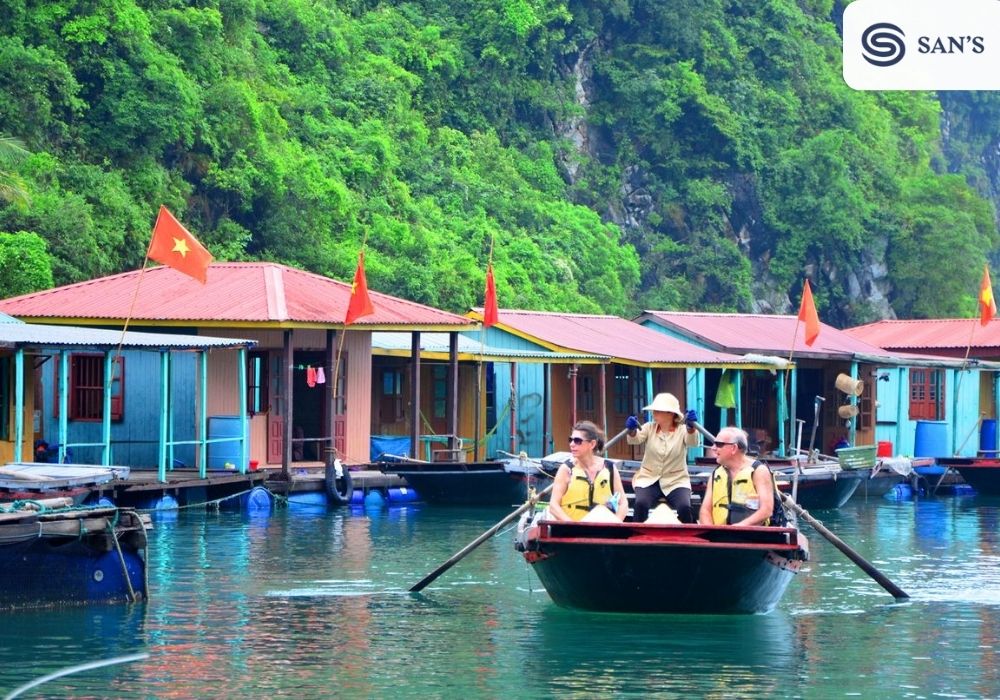
Cong Dam Fishing Village stands apart as a secluded attraction, largely untouched by the usual tourist influx, making it an idyllic haven for global travelers. Its pristine natural beauty has origins stretching back nearly 340 million years.
Much like other age-old fishing communities, Cong Dam boasts several colorful floating homes set against a dramatic mountainous backdrop. Over 120 residents call this village home, relying on fishing as their primary livelihood. A plethora of engaging activities beckon visitors. You can navigate the village waters in a traditional bamboo boat or kayak, explore nearby caves, or simply relax and sunbathe on the beach.
>>> You may also like: Swimming in Halong Bay: A Bucket List Adventure for 2023
Ba Hang Floating Village
- Situated at the base of Dau Go island, near Thien Cung cave in Halong Bay.
- A quaint, untouched, and serene fishing village within Halong Bay.
- Named “Three Caves” due to the appearance of three enigmatic caves during low tide, allowing boats to navigate through. Served as a shooting location for the renowned film “Kong: Skull Island”.
- Current Status: Welcomes visitors, though traditional fishing activities have ceased.
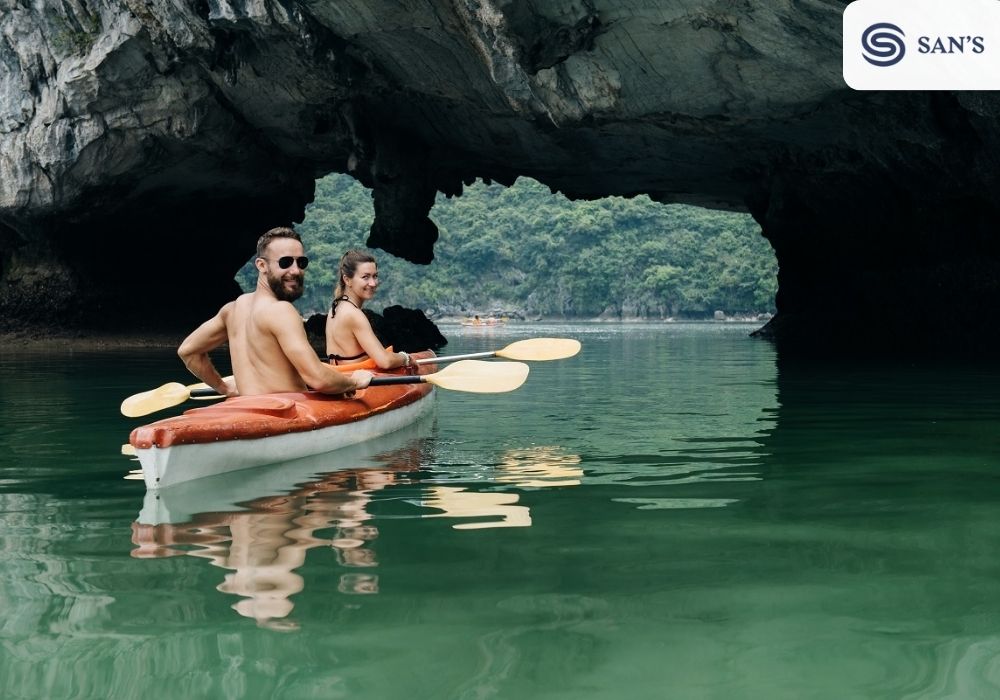
Located approximately 3km south of Tuan Chau Port, Ba Hang once housed 50 families primarily involved in fishing prior to 2014. Today, these inhabitants have been moved to the mainland by the government for better living conditions. While it’s no longer an active fishing village, some individuals remain, offering rowboat services for tourists.
Visitors to this floating settlement are met with breathtaking natural landscapes, towering limestone formations, rich plant life, and serene waters. One can opt to kayak and explore the beauty at their own pace or board a rowing boat for a more leisurely photo opportunity.
>>> You may also like: 10 Best Things to Do in Halong Bay
Cua Van Floating Village
- Situated in Hung Thang commune, roughly 20km from the Tuan Chau tourist pier.
- Halong Bay’s most expansive and time-honored floating village. Ranked among the top 10 picturesque coastal villages worldwide by Travel + Leisure.
- Current Status: Welcoming visitors.
In 2012, Cua Van floating village was recognized by the travel website Journeyetc.com as one of the 16 most enchanting ancient villages globally. With its 300 vibrant floating homes that embody a rich traditional culture, set against the backdrop of imposing limestone peaks, serene waters, and captivating natural allure, this village is a magnet for tourists.
Visitors can delve into the beauty of this village by rowing or kayaking, getting a glimpse of the diligent fishermen’s daily lives, and savoring the magnificent vistas of Halong Bay. Given the village’s distance from the mainland, it’s advisable for tourists to opt for a cruise to reach Cua Van floating village. Several cruises incorporate a stop at this village in their itinerary.
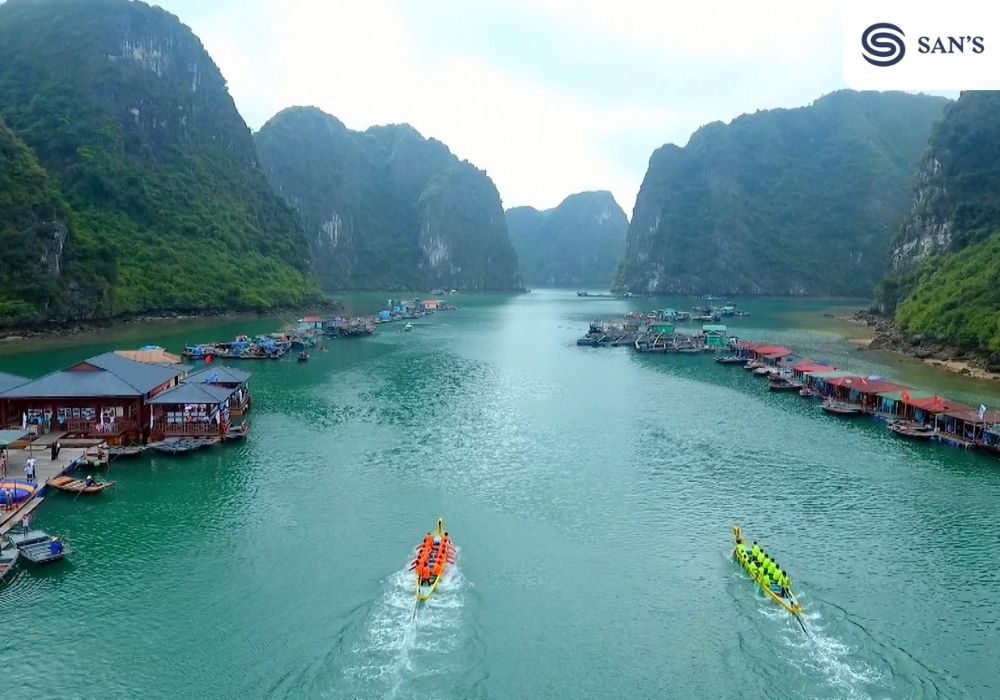
Tips when traveling to floating villages in Halong Bay
Integral to Vietnam’s system of floating villages, the fishing communities of Halong Bay offer distinct characteristics that captivate many visitors. To optimize your experience, consider these tips from those who know the area best:
- For genuine interactions with local fishermen, Cua Van and Vung Vieng floating villages are the top picks, as inhabitants of other villages have relocated.
- When kayaking or using a rowing boat, it’s advisable to pack light, wear comfortable attire, and apply sunscreen.
- The ideal period to explore these floating villages is between September and November, given the moderate and agreeable climate.
- Don’t forget to bring along your camera or smartphone to capture the breathtaking vistas.
We trust you’ll have a memorable experience exploring the fishing villages of Halong Bay. It’s highly suggested to include at least one of these villages in your Vietnam bay itinerary. For more detailed information about top Ha Long Bay cruises, please contact us via website or instagram


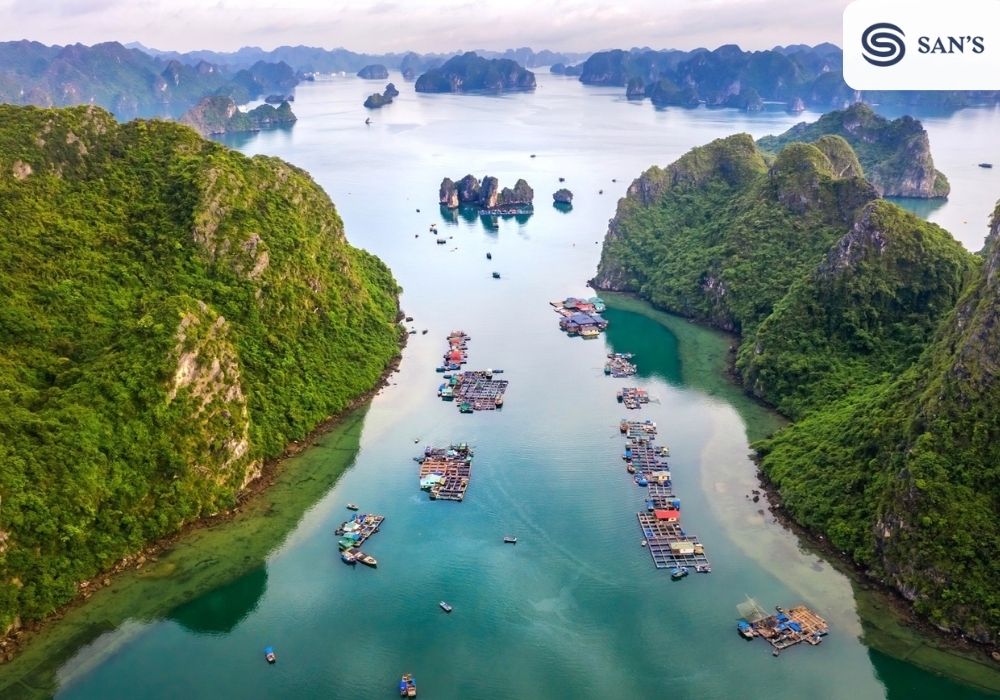
Comment (0)